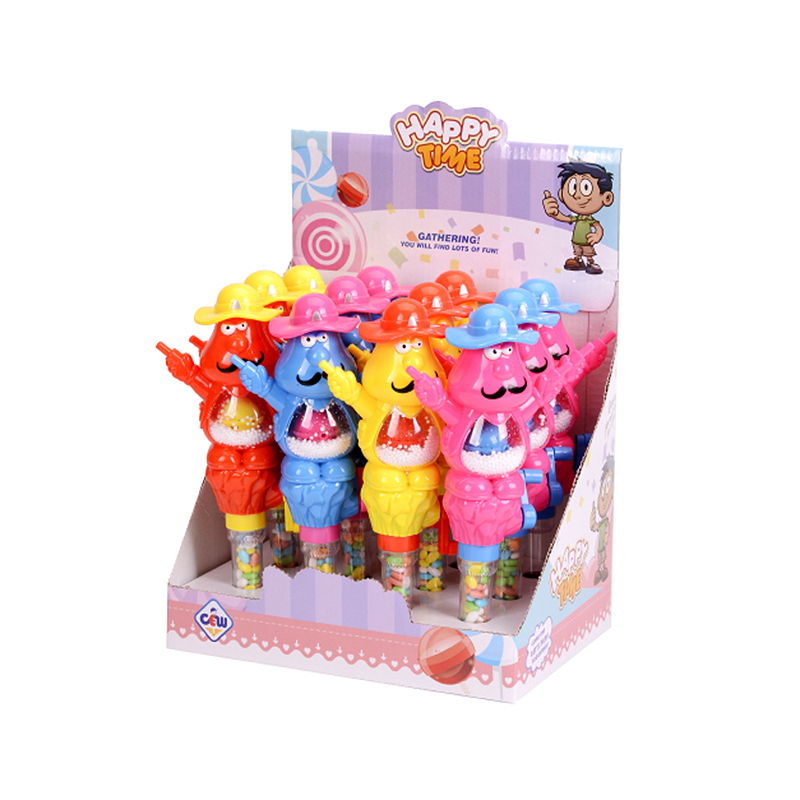While some people think that enjoying a sweet confection is the ultimate treat, others might want to find an additional surprise under the wrapper. Atlantic Candy Company headed into the Shark Tank seeking funding for its candy business beyond its contract manufacturing business.
According to TV Guide, "Shark Tank" episode 803 originally aired on October 14, 2016. Entrepreneur Jared Whetsome pitched the sharks $1 million dollar funding for 10% equity in his company. Although the St. Augustine, Florida-based company's request might be as uncanny as the city's magical Fountain of Youth, the candy contract manufacturer was looking to sell its own sweet treasure instead of being a behind-the-scenes confectionery maker for other companies. Trolls Blind Bags

Whetstone wanted to bring to market a new candy venture, the "Awesome Ball." A chocolate shell covers a plastic capsule, which holds a toy. While the Food, Drug, and Cosmetic Act has banned "non-nutritive object embedded" in a candy since 1938, as explained by Marketplace, this sweet treat skirts the issue since the toy is held within a separate structure.
Even though the fun and eating satisfaction might delight people of all ages, the sharks were not willing to get behind this concept. From a soon-to-expire patent to questionable business practices, Atlantic Candy Company left the tank without a deal. But, like the optimism the St. Augustine business location provides, the historic brand found a way to get those sweet surprises on store shelves.
Although Atlantic Candy Company left Shark Tank without a deal, the candy manufacturing company did find a way to bring its concept of a toy inside of a chocolate sphere to consumers. Branded as ToyBox, the chocolate with a surprise treat has been available at various stores, including Target, Walmart, and Dollar General. As seen on its Instagram page, the candy was organic, gluten-free, nut-free, and non-GMO. Based on the initial postings in 2017, the overall response was positive.
While the brand's website lists the confection, the ToyBox Instagram page has not been updated since January 2021 at the time of this writing. Looking at some of the previous comments, shoppers did have difficulty finding the candy at various retailers. It is unclear whether or not the brand can still be purchased or where it is available.
Although it is uncertain whether or not ToyBox can be found in stores, Atlantic Candy Company is still in business. The parent company's website states that it offers contract manufacturing for some well-known brands like Mars, Hershey's, and Ferrera. In addition, it offers private-label candy production.
A hidden element inside of a dessert can receive oohs and ahhs around the table. Granted the lava cake with its luscious center is delectable, but there are treats that sometimes have other hidden, non-edible elements. The legend of the baby inside the King Cake is one. Many people remember the tattoos inside the Cracker Jack box or the toy inside the cereal box. If there are examples of hidden elements inside food products, why are toys inside a chocolate candy taboo?
As earlier stated, the Federal Food, Drug, and Cosmetics Act restricts "non-nutritive objects" inside confectionery products. That regulation is why Kinder Eggs, available in some countries, are different from Kinder Joy, which is sold in the U.S. With the former, the candy and toy are together and the latter has them in two separate sections. The idea is that the toy presents a potential choking hazard for consumers.
As candy companies and manufacturers create new concepts, like Atlantic Candy Company's idea on "Shark Tank," they develop methods to keep the toy and the candy separate yet still offer the surprise and delight element. For example, the Australian brand Yowie offers a small animal inside a plastic shell that has been covered in chocolate. That method satisfied the FDA requirements.

Growing Dinosaur Egg While many people want that surprise and delight moment with their candy, the rule of thumb for manufacturers is simple. Keep the toy out of the food, but it can be in the packaging.